Stian Normann Anfinsen
Towards Targeted Change Detection with Heterogeneous Remote Sensing Images for Forest Mortality Mapping
Feb 28, 2022



Abstract:In this paper we develop a method for mapping forest mortality in the forest-tundra ecotone using satellite data from heterogeneous sensors. We use medium resolution imagery in order to provide the complex pattern of forest mortality in this sparsely forested area, which has been induced by an outbreak of geometrid moths. Specifically, Landsat-5 Thematic Mapper images from before the event are used, with RADARSAT-2 providing the post-event images. We obtain the difference images for both multispectral optical and synthetic aperture radar (SAR) by using a recently developed deep learning method for translating between the two domains. These differences are stacked with the original pre- and post-event images in order to let our algorithm also learn how the areas appear before and after the change event. By doing this, and focusing on learning only the changes of interest with one-class classification (OCC), we obtain good results with very little training data.
Power Flow Balancing with Decentralized Graph Neural Networks
Nov 03, 2021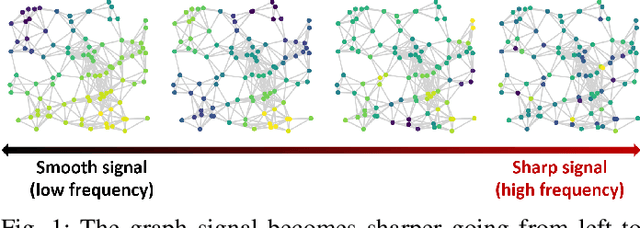
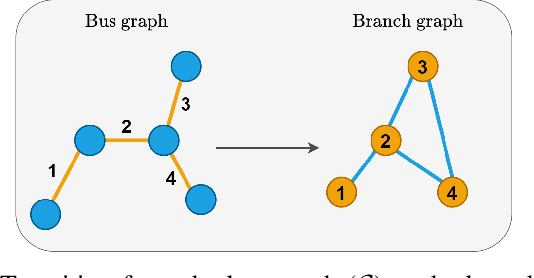
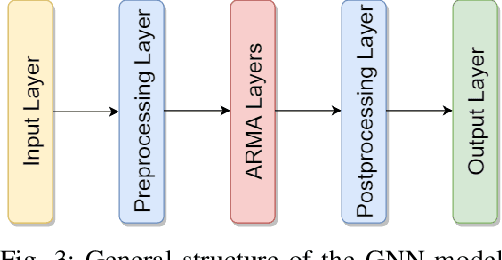
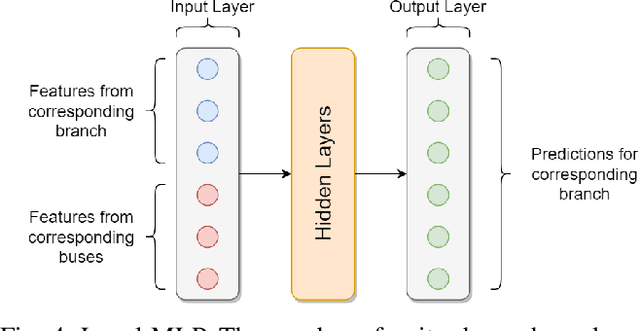
Abstract:We propose an end-to-end framework based on a Graph Neural Network (GNN) to balance the power flows in a generic grid. The optimization is framed as a supervised vertex regression task, where the GNN is trained to predict the current and power injections at each grid branch that yield a power flow balance. By representing the power grid as a line graph with branches as vertices, we can train a GNN that is more accurate and robust to changes in the underlying topology. In addition, by using specialized GNN layers, we are able to build a very deep architecture that accounts for large neighborhoods on the graph, while implementing only localized operations. We perform three different experiments to evaluate: i) the benefits of using localized rather than global operations and the tendency to oversmooth when using deep GNN models; ii) the resilience to perturbations in the graph topology; and iii) the capability to train the model simultaneously on multiple grid topologies and the consequential improvement in generalization to new, unseen grids. The proposed framework is efficient and, compared to other solvers based on deep learning, is robust to perturbations not only to the physical quantities on the grid components, but also to the topology.
Constructing Forest Biomass Prediction Maps from Radar Backscatter by Sequential Regression with a Conditional Generative Adversarial Network
Jun 21, 2021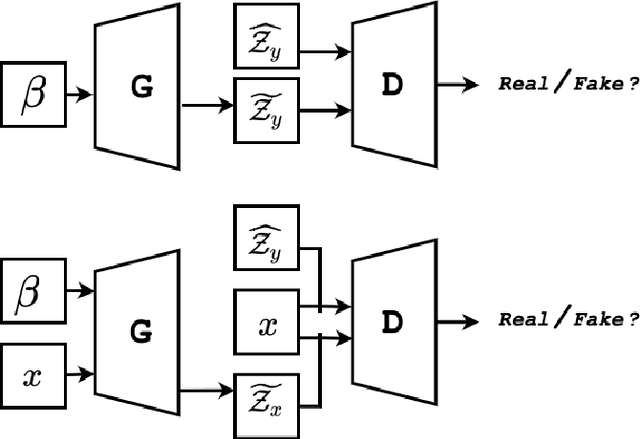
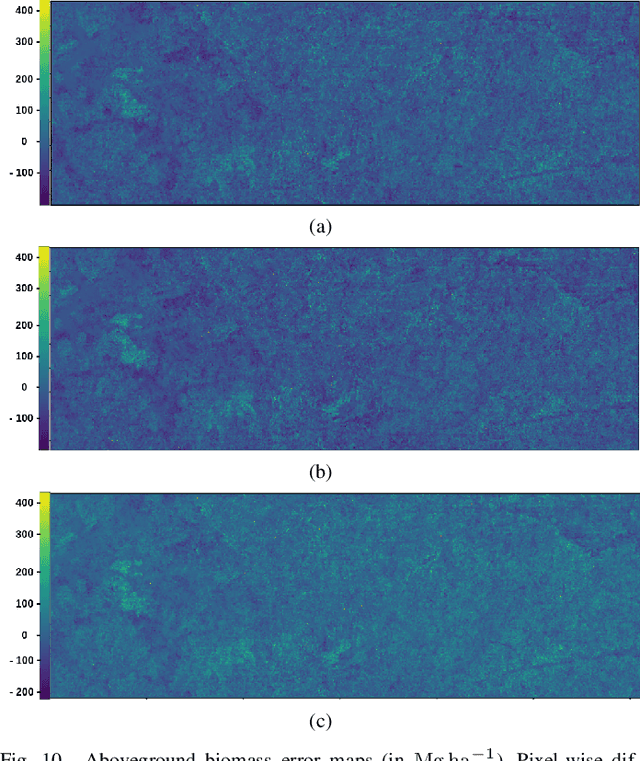
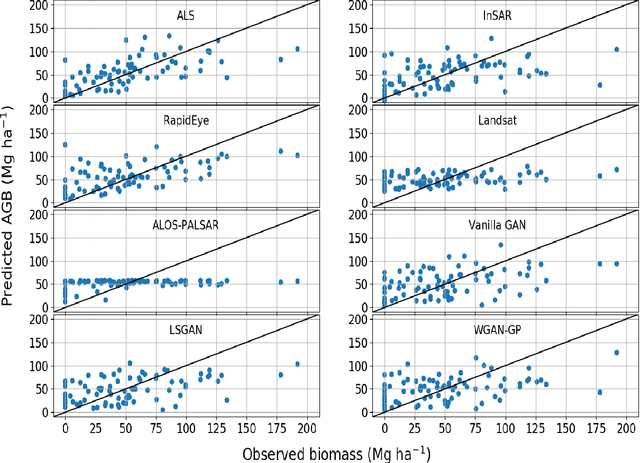

Abstract:This paper studies construction of above-ground biomass (AGB) prediction maps from synthetic aperture radar (SAR) intensity images. The purpose is to improve traditional regression models based on SAR intensity, trained with a limited amount of AGB in situ measurements. Although it is costly to collect, data from airborne laser scanning (ALS) sensors are highly correlated with AGB. Therefore, we propose using AGB predictions based on ALS data as surrogate response variables for SAR data in a sequential modelling fashion. This increases the amount of training data dramatically. To model the regression function between SAR intensity and ALS-predicted AGB we propose to utilise a conditional generative adversarial network (cGAN), i.e. the Pix2Pix convolutional neural network. This enables the recreation of existing ALS-based AGB prediction maps. The generated synthesised ALS-based AGB predictions are evaluated qualitatively and quantitatively against ALS-based AGB predictions retrieved from a traditional non-sequential regression model trained in the same area. Results show that the proposed architecture manages to capture characteristics of the actual data. This suggests that the use of ALS-guided generative models is a promising avenue for AGB prediction from SAR intensity. Further research on this area has the potential of providing both large-scale and low-cost predictions of AGB.
Guided Nonlocal Means Estimation of Polarimetric Covariance for Canopy State Classification
Jun 17, 2021



Abstract:We have developed a nonlocal algorithm for estimating polarimetric synthetic aperture radar (PolSAR) covariance matrices on single-look complex (SLC) format resolution. The algorithm is inspired by recent work with guided nonlocal means (NLM) speckle filtering, where a co-registered optical image is used to aid the filtering. Based on patch-wise dissimilarities in the SAR and optical domains we set the weights used for the nonlocal average of the outer product of the lexicographic target vectors which form the estimate. By use of this method we show that the estimated covariance matrices preserve the local structure better than previous filtering methods and improve the separation of live from defoliated and dead forest. The detail preserving nature of the algorithm also means that it can be applicable in other settings where preserving the SLC format resolution is necessary.
Polarimetric Guided Nonlocal Means Covariance Matrix Estimation for Defoliation Mapping
Jan 24, 2020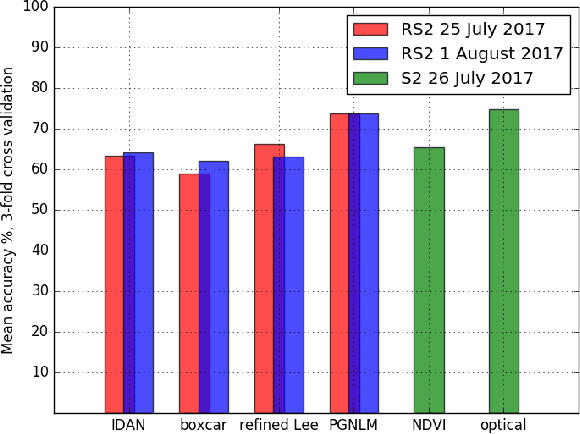
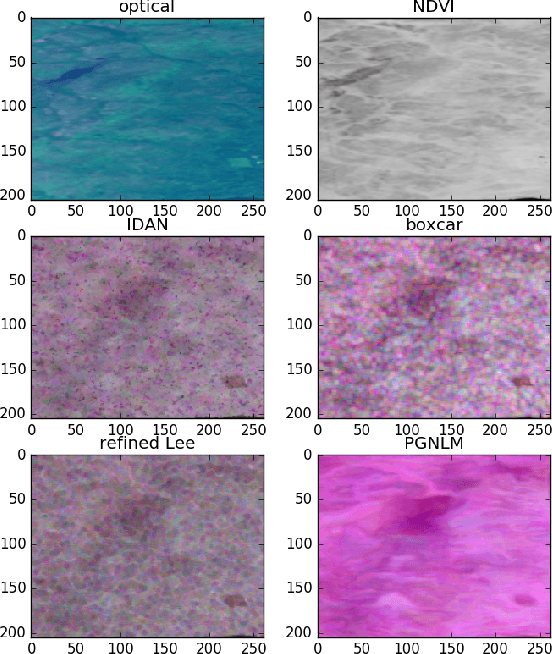
Abstract:In this study we investigate the potential for using Synthetic Aperture Radar (SAR) data to provide high resolution defoliation and regrowth mapping of trees in the tundra-forest ecotone. Using in situ measurements collected in 2017 we calculated the proportion of both live and defoliated tree crown for 165 $10 m \times 10 m$ ground plots along six transects. Quad-polarimetric SAR data from RADARSAT-2 was collected from the same area, and the complex multilook polarimetric covariance matrix was calculated using a novel extension of guided nonlocal means speckle filtering. The nonlocal approach allows us to preserve the high spatial resolution of single-look complex data, which is essential for accurate mapping of the sparsely scattered trees in the study area. Using a standard random forest classification algorithm, our filtering results in a $73.8 \%$ classification accuracy, higher than traditional speckle filtering methods, and on par with the classification accuracy based on optical data.
Deep Image Translation with an Affinity-Based Change Prior for Unsupervised Multimodal Change Detection
Jan 13, 2020



Abstract:Image translation with convolutional neural networks has recently been used as an approach to multimodal change detection. Existing approaches train the networks by exploiting supervised information of the change areas, which, however, is not always available. A main challenge in the unsupervised problem setting is to avoid that change pixels affect the learning of the translation function. We propose two new network architectures trained with loss functions weighted by priors that reduce the impact of change pixels on the learning objective. The change prior is derived in an unsupervised fashion from relational pixel information captured by domain-specific affinity matrices. Specifically, we use the vertex degrees associated with an absolute affinity difference matrix and demonstrate their utility in combination with cycle consistency and adversarial training. The proposed neural networks are compared with state-of-the-art algorithms. Experiments conducted on two real datasets show the effectiveness of our methodology.
 Add to Chrome
Add to Chrome Add to Firefox
Add to Firefox Add to Edge
Add to Edge